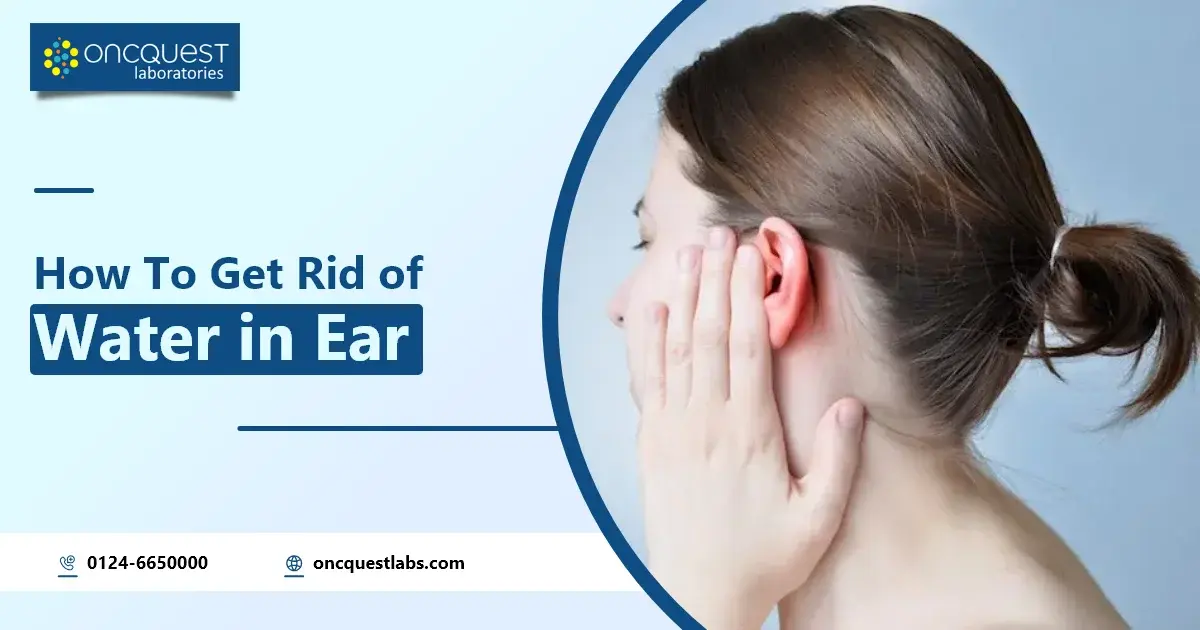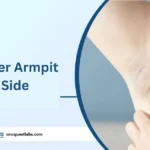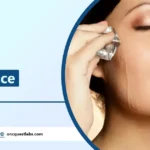Water trapped in the ear is a common yet often bothersome issue that many people encounter. Whether it’s from swimming, showering, or accidentally splashing water while washing your face, having water lodged in your ear canal can lead to a feeling of fullness, muffled hearing, and even discomfort. While it’s usually a temporary problem, if left unaddressed, it can lead to more serious issues like infections or inflammation. Understanding how to effectively remove trapped water is crucial not only for comfort but also for preventing potential complications. This guide will walk you through practical and safe methods to get rid of water in your ear, ensuring that you can alleviate the discomfort quickly and effectively.
Contents
- 1 Causes of Water Getting Trapped in the Ear
- 2 Symptoms of Water Trapped in the Ear
- 3 Immediate Home Remedies for Water in the Ear
- 4 When to Seek Medical Attention
- 5 Frequently Asked Questions (FAQ)
- 5.1 How long does it typically take for water to leave the ear on its own?
- 5.2 Can trapped water in the ear lead to an ear infection?
- 5.3 Are there any over-the-counter solutions for water in the ear?
- 5.4 What should I avoid doing if I have water trapped in my ear?
- 5.5 When is it necessary to see a doctor for trapped water in the ear?
Causes of Water Getting Trapped in the Ear
Water can become trapped in the ear canal for several reasons, and understanding these causes can help in effectively preventing and addressing the issue. Here are the common causes:
- Swimming and Showering: One of the most frequent causes of water getting trapped in the ear is from activities involving submersion or splashing. Swimming pools, lakes, and even showers can introduce water into the ear canal. The problem often arises when water enters the ear and doesn’t drain out naturally.
- Bathing and Washing Hair: When you’re bathing or washing your hair, water can easily seep into the ear canal, especially if you tilt your head or if you have longer hair that retains water.
- Improper Ear Cleaning: Using cotton swabs or other objects to clean your ears can push water deeper into the ear canal rather than removing it. Additionally, it can push earwax against the eardrum, creating a barrier that traps water.
- Ear Anatomy: Certain anatomical features can make individuals more prone to having water trapped in their ears. For example, narrow or unusually shaped ear canals can prevent water from draining out efficiently.
- Excessive Earwax: Earwax (cerumen) can accumulate and form a plug, trapping water behind it. This blockage can prevent the water from naturally draining out of the ear canal.
- Humidity and Environmental Factors: High humidity or exposure to wet conditions can sometimes lead to water retention in the ear canal. Even excessive sweating can contribute to the problem.
Symptoms of Water Trapped in the Ear
When water becomes trapped in the ear, it can lead to several noticeable symptoms. The most common issue is a feeling of fullness or pressure inside the ear, which can make it seem as if the ear is blocked. This sensation often accompanies muffled hearing, where sounds appear distant or less clear due to the obstruction. Many people also experience a persistent tickling or itching inside the ear canal, which can be quite uncomfortable. In some cases, discomfort or dull pain may develop, particularly if the water remains trapped for an extended period. Temporary hearing loss is another possible symptom, caused by the trapped water affecting the movement of the eardrum and sound transmission. Additionally, you might feel a continuous sensation of “wetness,” even if you haven’t recently been exposed to water. Although less common, trapped water can sometimes lead to ringing or buzzing sounds in the ear, known as tinnitus. In rare instances, it can also affect balance or cause dizziness if it impacts the inner ear’s function. Recognizing these symptoms promptly is crucial for addressing the problem effectively and preventing potential complications.
Immediate Home Remedies for Water in the Ear
If you find yourself with water trapped in your ear, several effective home remedies can help clear it out. Here are some practical methods to try:
- Gravity and Tilting Techniques: One of the simplest ways to remove trapped water is by using gravity. Tilt your head to the side so that the affected ear is facing down. Gently shake your head or tug on your earlobe to help the water drain out. Sometimes, lying down on your side for a few minutes can also help the water escape.
- Valsalva Maneuver: The Valsalva maneuver involves gently blowing air out of your nose while pinching your nostrils shut and keeping your mouth closed. This can help equalize pressure in the ear canal and potentially push the trapped water out. Be cautious not to blow too hard, as excessive pressure can harm the ear.
- Applying Heat: Using a warm compress can help evaporate the trapped water. Soak a cloth in warm water, wring it out, and place it over the affected ear for a few minutes. Alternatively, use a hairdryer on a low, cool setting held at a safe distance from the ear to help dry out the water.
- Creating a Vacuum: You can create a gentle suction by tilting your head to the side, pressing the palm of your hand against the ear, and then quickly removing it. This action can help draw the water out of the ear canal.
- Ear Drying Drops: Over-the-counter ear drops designed to dry out moisture can be effective. These drops typically contain alcohol, which helps evaporate the water. Follow the instructions on the packaging for best results.
By trying these remedies, you can often alleviate the discomfort and remove trapped water quickly. However, if symptoms persist or worsen, it’s important to seek medical attention.
When to Seek Medical Attention
Knowing when to seek medical attention for water trapped in the ear is essential to avoid complications and ensure proper care. If you’ve tried home remedies and the water remains trapped for more than 24-48 hours, it’s a good idea to consult a healthcare professional. Persistent symptoms that don’t improve with at-home treatments may indicate an underlying issue that requires medical evaluation. Additionally, if you experience severe pain, redness, or notice any discharge from the ear, these could be signs of an infection or inflammation, such as swimmer’s ear, that needs prompt attention. If you have difficulty hearing or experience dizziness, it’s important to seek professional help to address any potential impact on your balance or hearing. An ENT specialist can provide a thorough examination, remove any trapped water safely, and offer treatments to prevent further issues. Seeking medical advice ensures that you address the problem effectively and avoid any potential complications that could arise from untreated water in the ear.
Conclusion
Dealing with water trapped in your ear can be uncomfortable, but with the right approach, it’s usually a manageable issue. By understanding the common causes and recognizing the symptoms early, you can use effective home remedies such as gravity techniques, heat application, and ear drying drops to relieve the problem. Preventative measures, including using earplugs and avoiding cotton swabs, can help you avoid the issue in the first place. However, if the water remains trapped for more than 24-48 hours, or if you experience severe pain, persistent discomfort, or other concerning symptoms, seeking medical attention is crucial. Prompt and appropriate treatment can prevent complications and ensure your ear health is maintained.
Frequently Asked Questions (FAQ)
How long does it typically take for water to leave the ear on its own?
- Water usually drains from the ear within a few hours to 24 hours. If it persists beyond this time frame, you may need to try additional remedies or consult a healthcare professional.
Can trapped water in the ear lead to an ear infection?
- Yes, if water remains trapped for an extended period, it can create a moist environment conducive to bacterial growth, potentially leading to an ear infection such as swimmer’s ear.
Are there any over-the-counter solutions for water in the ear?
- Yes, over-the-counter ear drops designed to dry out moisture can be effective. These drops often contain alcohol that helps evaporate the trapped water.
What should I avoid doing if I have water trapped in my ear?
- Avoid inserting objects like cotton swabs into your ear, as this can push the water deeper and potentially cause damage. Also, steer clear of trying to forcefully remove the water, which can lead to further complications.
When is it necessary to see a doctor for trapped water in the ear?
- If the water remains trapped for more than 24-48 hours despite home remedies, or if you experience severe pain, noticeable discharge, significant hearing loss, or dizziness, it’s important to seek medical attention.





